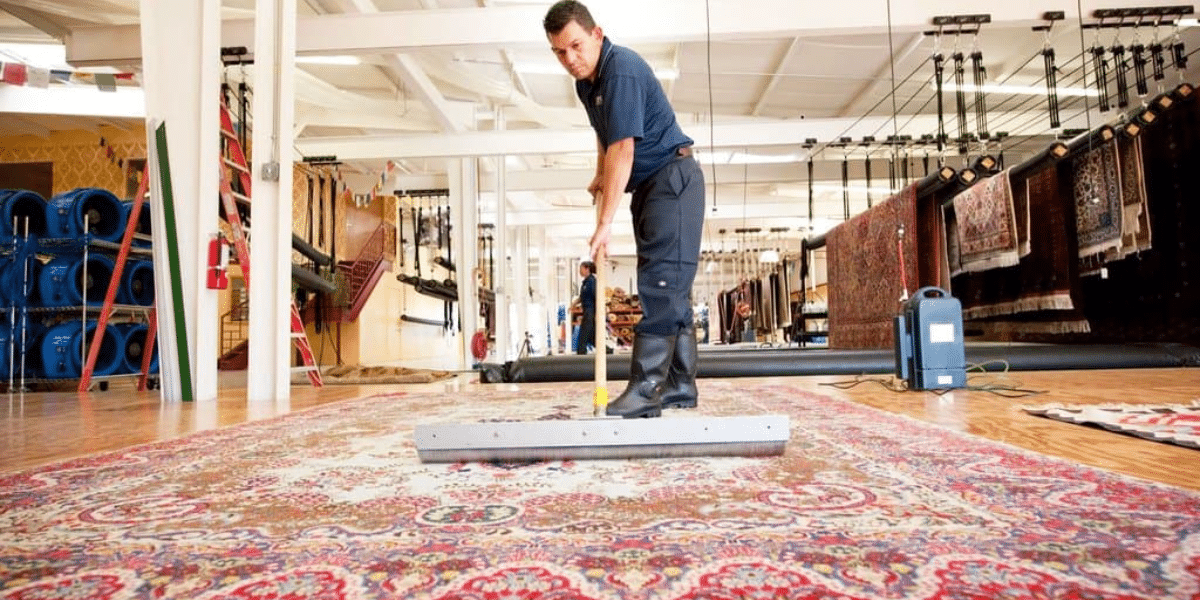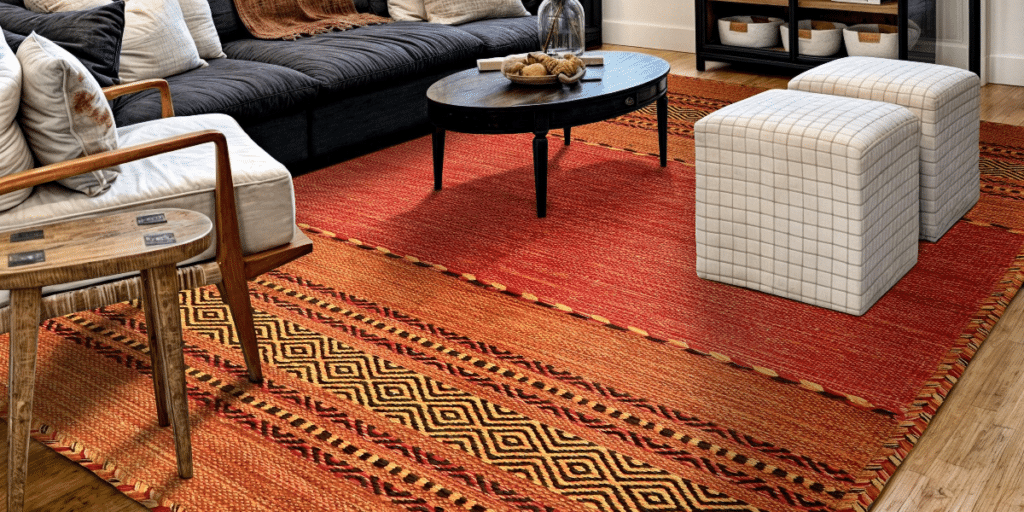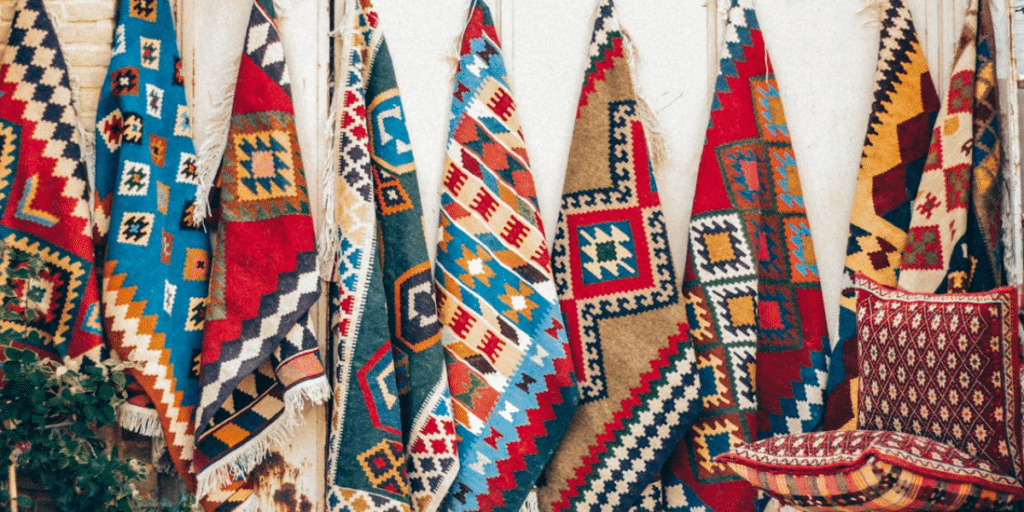Kilim rugs, with their intricate patterns and vibrant colors, are more than just decorative items—they’re timeless works of art that tell stories of culture and craftsmanship. But how do you keep these delicate pieces clean without damaging their unique structure? Can you vacuum a kilim rug? What’s the best way to remove stains or get rid of odors?
In this article, we’ll guide you through everything you need to know about cleaning a kilim rug, from routine care to tackling tough stains. With gentle techniques and the right tools, you can maintain your kilim’s beauty and longevity for years to come.
Are Kilim Rugs Hard To Clean?

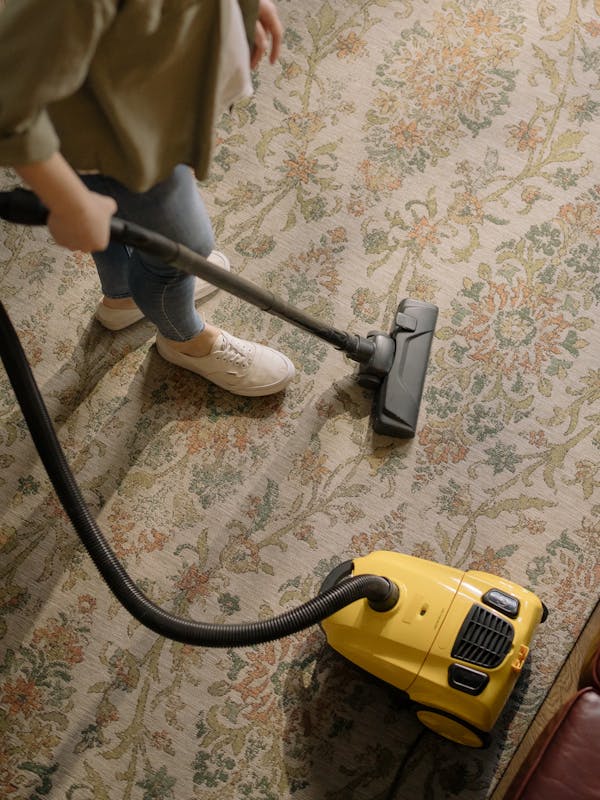
No, kilim rugs aren’t hard to clean at all! They might seem intimidating at first because of their intricate patterns and delicate appearance, but with a little care and the right techniques, keeping them fresh and clean is pretty straightforward.
One of the reasons people assume kilims are difficult to clean is that they’re handmade and often woven from natural fibers like wool or cotton. That said, their flat-weave construction actually makes them easier to maintain than thick, pile rugs. Dirt and dust don’t embed deeply, which means regular upkeep—like vacuuming or shaking them out—can go a long way.
Tips for Cleaning Kilim Rugs
Here are some easy and practical tips to keep your kilim rug in top shape:
- Vacuum Gently and Often: Vacuuming is your best friend for routine cleaning. Use a low-suction setting and skip the beater bar—it can pull and damage the fibers. Always vacuum along the direction of the weave. And don’t forget to vacuum both sides of the rug. Kilims are reversible, and dirt can build up on either side.
- Shake It Out: Sometimes, the simplest methods are the best. Take your kilim outside and give it a good shake to loosen dirt and dust. If it’s too large to handle, you can drape it over a sturdy railing and gently beat it with a soft brush or broom.
- Act Fast on Stains: Spills happen, but they don’t have to ruin your rug. Blot the spill immediately with a clean, dry cloth—never rub, as this can push the stain deeper into the fibers. For tougher spots, mix a small amount of mild detergent with water and dab the area with a cloth. Rinse by blotting with a damp cloth to remove any soap residue.
- Use Mild, Wool-Friendly Detergents :Always stick to gentle, wool-safe detergents when cleaning a kilim rug. Harsh chemicals or bleach can weaken the natural fibers and dull the rug’s colors. If you’re unsure, test the cleaner on a hidden area of the rug first.
- Skip the Soak :Kilim rugs don’t handle excessive moisture well. Avoid soaking them entirely, as it can lead to shrinking, warping, or color bleeding. Instead, spot-clean small areas and keep water use to a minimum.
- Avoid Sun and Heat :Never dry your kilim rug in direct sunlight or use high heat, such as a hairdryer, to speed up the process. Both can fade the colors and make the fibers brittle. Air-dry the rug flat in a shaded, well-ventilated area.
Can You Vacuum A Kilim Rug?
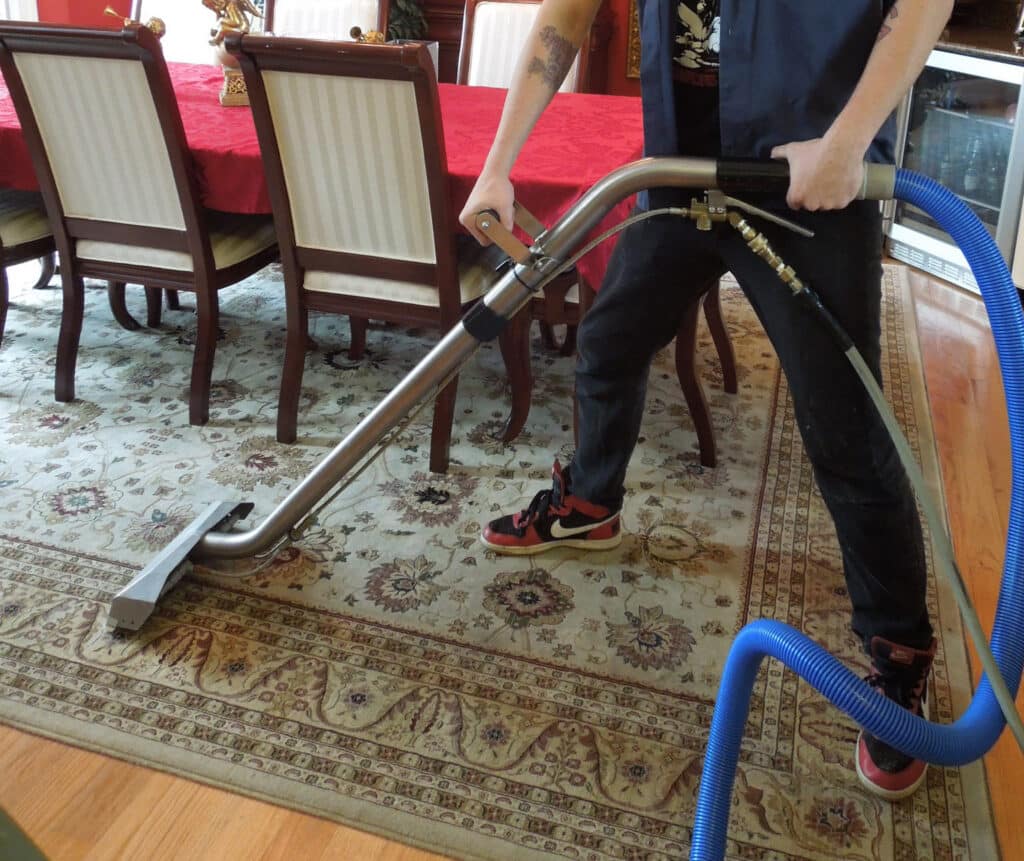
Yes, you can vacuum a kilim rug, and it’s one of the most effective ways to maintain its cleanliness. Kilim rugs are flat-woven and lack the pile of traditional rugs, which makes them less likely to trap deep-seated dirt. However, this also means their fibers are more exposed, so a rough or careless approach can cause damage. The good news is that with a little caution, vacuuming can keep your kilim rug looking vibrant without any risk of harm.
How to Vacuum a Kilim Rug the Right Way?
- Use a Low-Suction Setting :High suction might seem like it’ll get the job done faster, but it can pull at the delicate weave of your kilim, loosening the threads over time. Switch to the lowest suction setting on your vacuum to gently remove dirt without causing stress to the fibers.
- Skip the Beater Bar: The rotating bristles of a beater bar or brush roll can catch on the rug’s weave, damaging it or even pulling threads loose. If your vacuum has a “bare floor” or “no brush” setting, use that.
- Vacuum Both Sides: Kilim rugs are often reversible, and dirt doesn’t just sit on the surface you see. Flip the rug over and vacuum the back side to remove embedded dust and grit.
- Clean the Fringes Carefully : Don’t run the vacuum over them directly, as they can easily get sucked into the machine and damaged. Instead, shake the fringes out or use a soft brush to gently clean them.
How Do You Get Stains Out Of a Kilim Rug?

Spills are inevitable, but they don’t have to spell disaster. The key is acting quickly—don’t let the stain sit and settle.
Step-by-Step Stain Removal:
- Blot, Don’t Rub: Use a clean, absorbent cloth to blot the spill immediately. Never rub, as this can spread the stain and damage the fibers.
- Mix a Gentle Solution: Combine lukewarm water with a few drops of mild dish soap. Avoid anything harsh, as it could strip the rug’s natural oils or cause discoloration.
- Spot Clean with Care: Dip a soft cloth into the soapy water and dab at the stain gently, working from the edges inward.
- Rinse: Use a clean, damp cloth to wipe away any soap residue.
- Air Dry: Lay the rug flat and allow it to air dry completely before putting it back in place.
Are Kilims Washable? Old Vs Modern Rugs
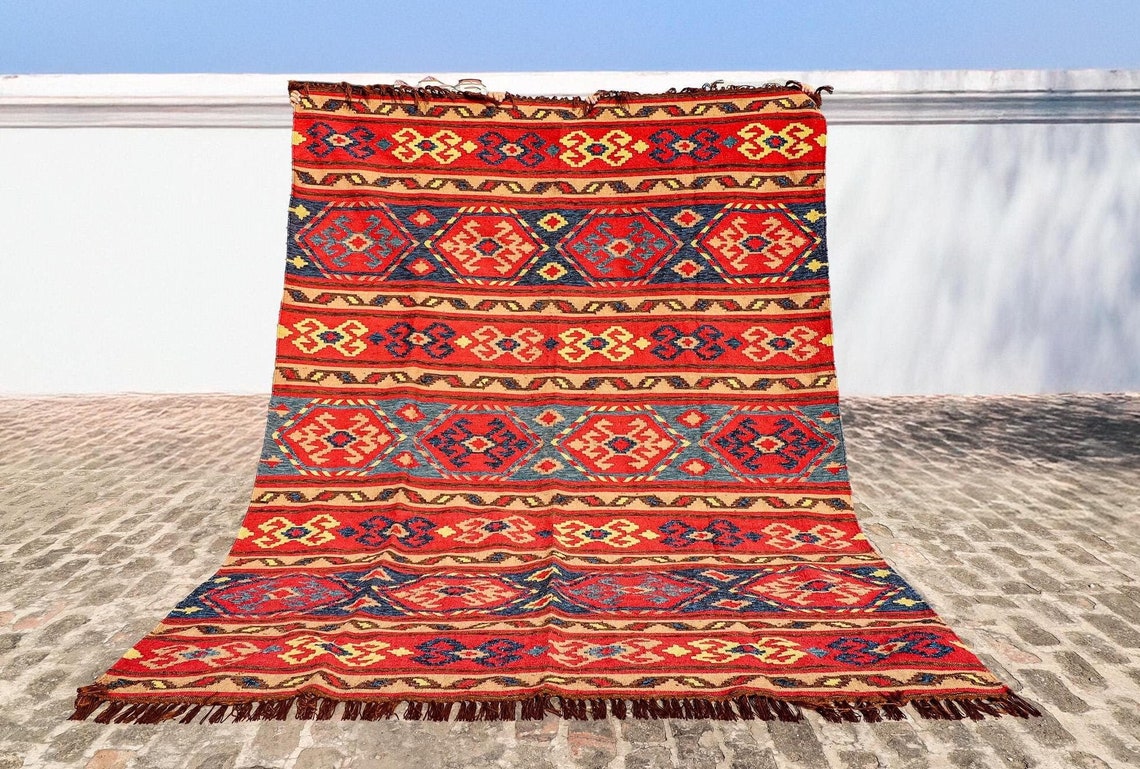
When it comes to kilims, one of the most common questions people have is whether these intricate rugs are washable. The answer isn’t as straightforward as you might hope, and it largely depends on the type of kilim you have—old or modern.
- Old Kilim Rugs: Antique kilim rugs are more fragile and should never be washed with water. Spot cleaning is the safest method for these.
- Modern Kilim Rugs: Thanks to advancements in materials and manufacturing techniques, some contemporary kilims are made to be machine-washable or at least easier to clean at home. However, it’s always wise to check the care label or consult the manufacturer before attempting any cleaning method.
Steam Clean a Kilim Rug: The Safest Method
For a thorough clean, steam cleaning can be a good option—provided you’re careful. This method works best for modern kilims that can withstand a bit of moisture.
- Use a Low-Heat Setting: Excessive heat can shrink natural fibers, so keep the steam on a low setting.
- Work in Small Sections: Don’t drench the rug. Lightly steam one section at a time, focusing on areas that need extra attention.
- Allow Plenty of Drying Time: After steaming, lay the rug flat and let it air dry completely to prevent mildew.
Can I Dry Clean A Kilim Rug?

No, dry cleaning is not the best option for kilim rugs. Kilim rugs are made with delicate materials, often handwoven with natural fibers and dyes that can be sensitive to the harsh chemicals used in traditional dry cleaning. The solvents used in dry cleaning can damage the rug’s vibrant colors, weaken its fibers, or cause the weave to distort.
If you need to clean your kilim, it’s better to stick to gentler methods like spot cleaning or professional cleaning specifically designed for these types of rugs. A specialist familiar with kilim rugs can help maintain its beauty and ensure its longevity.
How To Get Smell Out Of Kilim Rug?
Sometimes kilim rugs can develop odors, whether from spills, pets, or just general use. Fortunately, there are effective ways to freshen them up without harsh chemicals.
- Baking Soda: Sprinkle a generous amount of baking soda over the rug and let it sit for several hours, preferably overnight. Then, vacuum it up thoroughly. Baking soda is excellent for neutralizing odors.
- White Vinegar Mist: Mix equal parts white vinegar and water in a spray bottle. Lightly spritz the rug (don’t soak it!) and allow it to air dry. The vinegar smell will dissipate, taking the odor with it.
- Air It Out: Lay your rug outside in a shaded, breezy spot. Fresh air can work wonders, but avoid prolonged exposure to direct sunlight, which can fade colors.
- Professional Odor Removal: For persistent smells, a professional rug cleaner can apply specialized treatments to deodorize your kilim.
Wrap Up

Kilim rugs | Worldwide delivery
Explore a diverse collection of rugs crafted for style and durability. From kilims to modern designs, find your perfect rug at Kilim Provenance.
Caring for your kilim rug doesn’t have to be complicated. With the right approach, you can keep it looking fresh, vibrant, and full of character for years to come.. At Kilim Provenance. we understand the unique beauty and craftsmanship of each kilim, and we’re here to help you preserve that beauty with tips, advice, and top-quality care.
